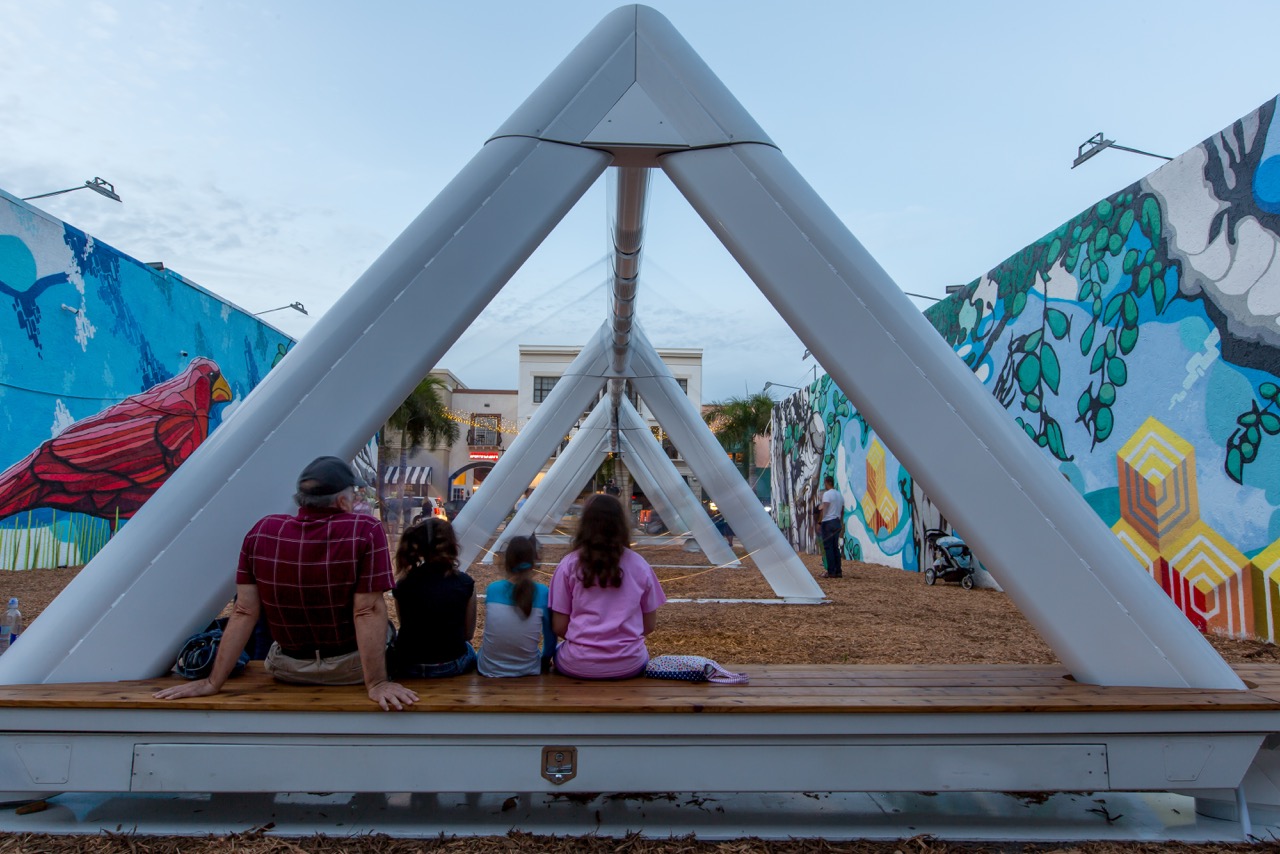
144 finalists advance in 2017 Knight Cities Challenge
We didn’t know what to expect when we launched our third Knight Cities Challenge last fall. The response in the first two years was phenomenal; from a total pool of more than 12,000 applications we have named fewer than 70 winning projects. We wondered if civic innovators would bring that same enthusiasm to this round. There is no question that they did that—and more.
This time we received more than 4,500 applications responding to the question, What’s your best idea to make cities more successful? The number even surpassed the applications we received in 2015. Now, 144 finalists will move forward to the next phase of our national call for ideas to make the 26 Knight communities more successful.
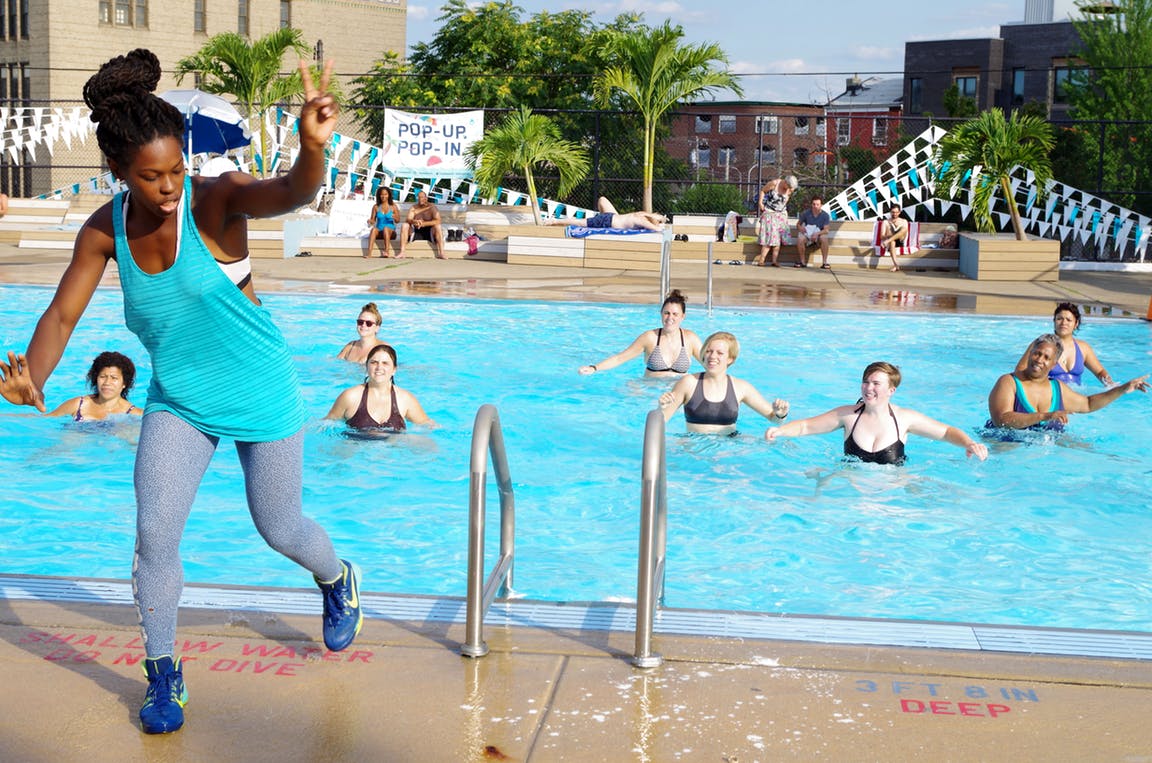
The ideas all focus on one or more of the three drivers of city success: talent, opportunity and engagement. There is at least one finalist in each of the 26 Knight communities, along with several projects that would be put to work in multiple cities.
Detroit and Philadelphia once again top the list of finalists, with 21 and 20 proposals respectively, on par with last year, but there are great ideas in the mix from all of the Knight communities, representing the breadth of our country, from San Jose, California, represented with eight projects, to Charlotte, North Carolina, with 12, and every Knight community between.
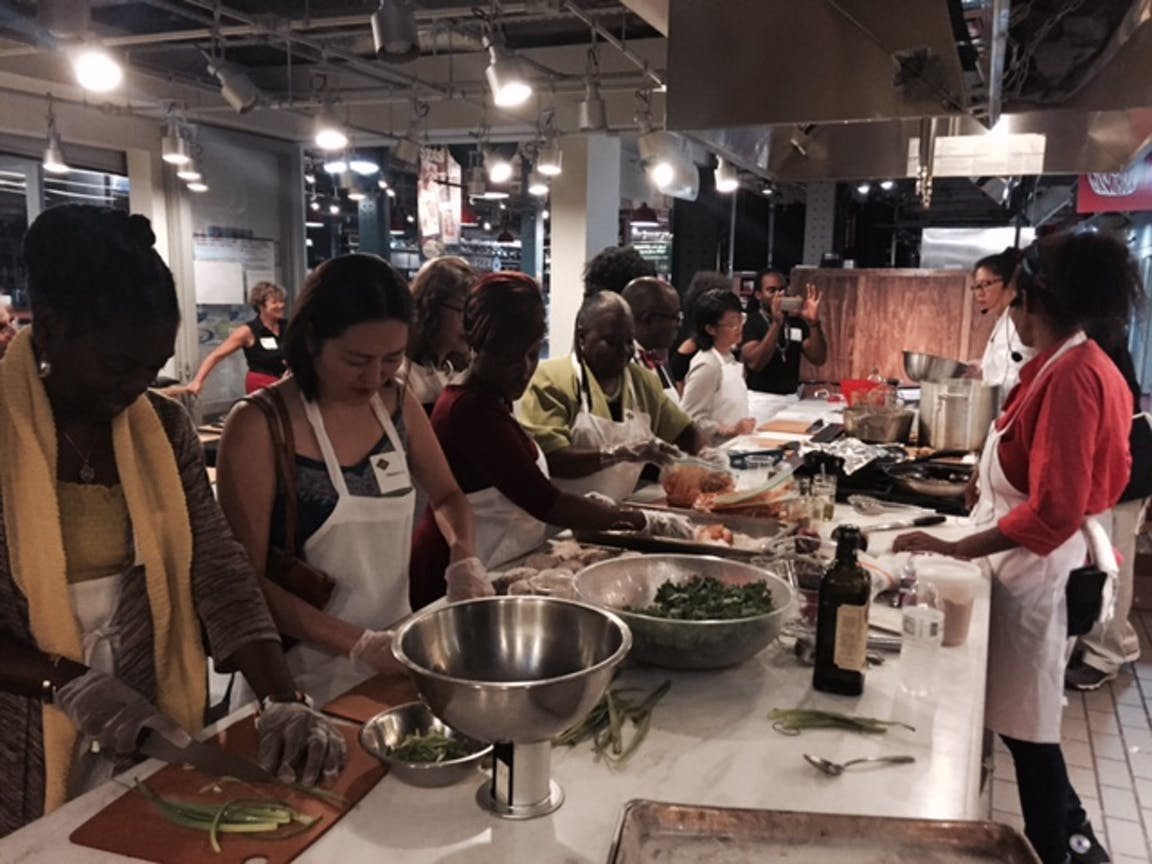
We’re looking forward to diving into the details. The finalists have until the end of January to submit full applications, which will include budgets, letters of recommendation, renderings and other material, for the next stage of our review process, which includes reviewers from Knight communities as well as national experts. We’ll submit the list of final recommended projects to Knight’s board of trustees later this year, and we’ll announce the winners, who will receive a share of up to $5 million, in the spring.
Congratulations to the finalists, and thank you to everyone who submitted an idea. We look forward to your being a part of Knight’s national network of civic innovators, and we look forward to connecting with you in your city. We can learn from your ideas and your commitment, and we will share what we learn from these experiments with you.
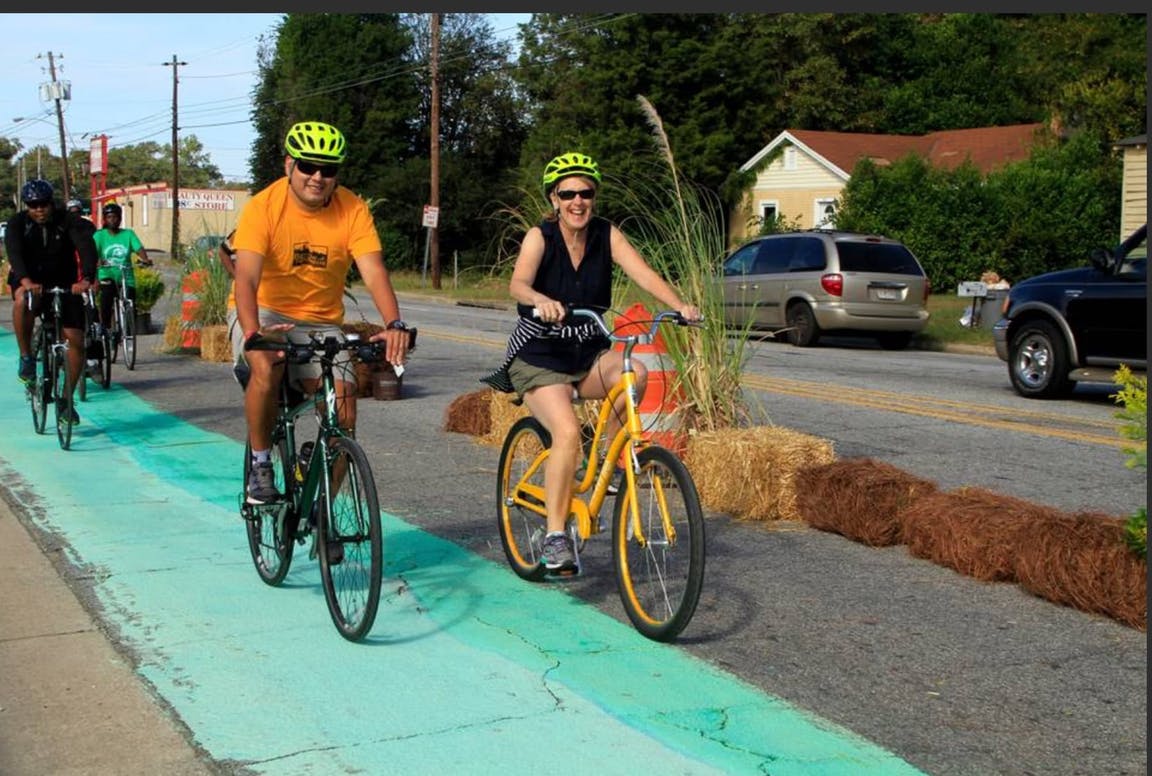
Thanks also to our team of reviewers, to those who helped select the finalists and to those joining us in exploring the 144 full applications. We can’t wait to review the final submissions, and to announce the winning ideas in spring 2017.
George Abbott is director of community and national initiatives at Knight Foundation. He can be reached via email at [email protected]. On Twitter, follow @garthurabbott and @knightfdn, and join the #knightcities conversation.
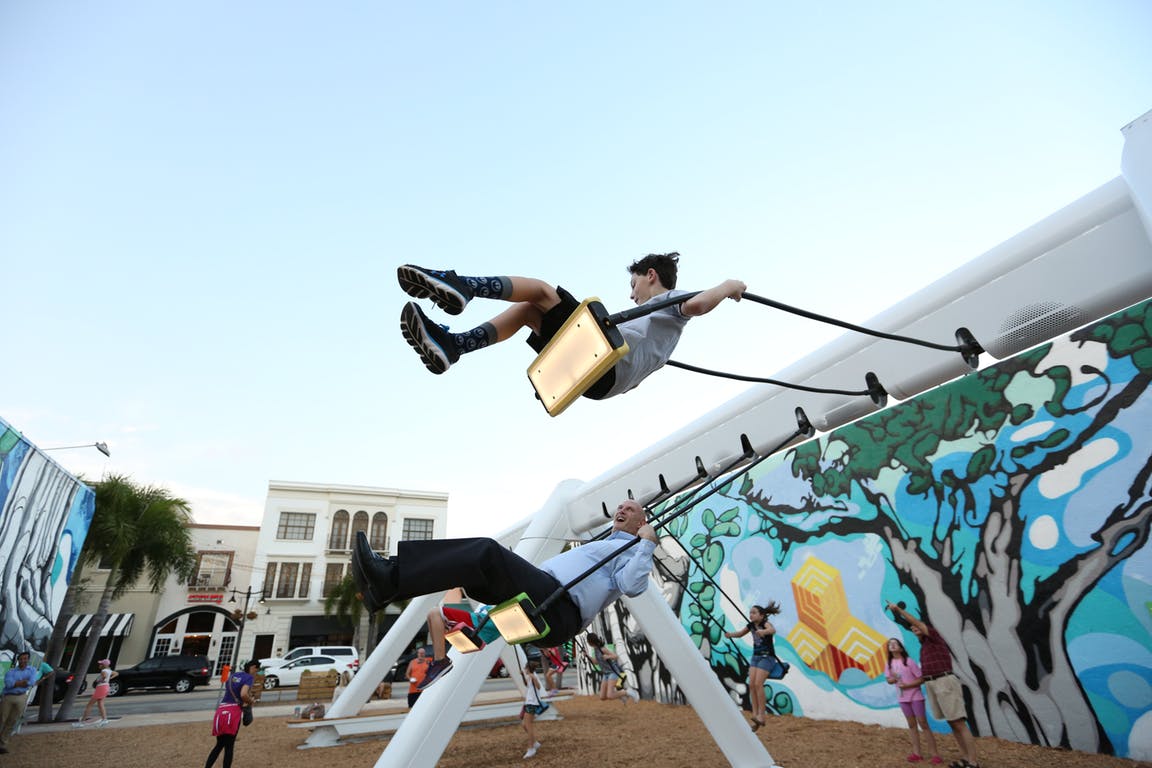
2017 Knight Cities Challenge Finalists
Aberdeen, South Dakota:
The A Place (submitted by Julie M. Johnson): Opening a pathway to more opportunity and civic engagement by creating a one-stop information and assistance center for immigrants and New Americans.
Akron, Ohio:
Decked Out (submitted by Da’Shika A. Wells and Andre Street): Connecting people of different backgrounds through a recurring dance party in downtown Akron that will encourage engagement while adding to the vibrancy of the city.
Designing Equity in Our Communities by Congress for the New Urbanism (submitted by Lynn Richards): Creating public spaces that are designed for everyone by ensuring public participation in the development of all city projects, including a plan for the city Innerbelt design.
The FREE-FORM Sculpture Project by Groundswell Design Group (submitted by David Fierabend): Bringing new life to downtown Akron with a new art installation that celebrates the movement of the Ohio and Erie Canal through form, color and wind.
Innerbelt National Forest (submitted by Hunter Franks): Reconnecting two socially and physically isolated neighborhoods by replacing an inoperative freeway in Akron with a lush forest and public space.
New American Enterprise Co-Op by International Institute of Akron (submitted by Susan Wuscher): Increase economic opportunities for New Americans by creating a co-op that will provide entrepreneurial skills including educational and technical resources to the foreign-born community in Akron.
@Play Akron by ART x LOVE (submitted by Mac Love): Encouraging deeper community connections through custom games and recreational activities that highlight the unique history, identity and character of each of the city’s communities.
(Re)Creation Rubber Matches by Stay in Play Recreation LLC (submitted by Andrew Novak): Increasing social and economic vibrancy by rehabilitating two sand volleyball courts in the heart of downtown Akron.
Tree House Village at Hardesty Park (submitted by Bridget Ambrisco): Increasing neighborhood vibrancy and connecting people by developing a neighborhood collaborative project focused on constructing a tree house village and fort in the northeast corner of Hardesty Park.
Biloxi, Mississippi:
Witnessing the Beach by Gulf Coast Community Design Studio (submitted by David Perkes): Engaging the public across race, income and age differences through a series of gathering and community discussion spaces at the beach along the path of the “wade-in” protests, which eventually led to the desegregation of the public beach in 1968.
Boulder, Colorado:
Boulder Pop-Up Spots (submitted by Wes Tate): Helping citizens find new ways to engage with each other by creating neighborhood pop-up spots: temporary, small-scale, easily accessible inviting places where people can meet and connect. Examples include a mini-garden, a bike rack with seating area, and a public parklet.
Park Talk: Community Conversation in Shared Spaces by Warm Cookies of the Revolution (submitted by Evan Weissman): Working with city divisions to encourage greater dialogue between residents and their government by activating libraries and open space parks as gathering spaces for people to connect on civic challenges and opportunities.
Bradenton, Florida:
Bradenton Champions (submitted by Simone Peterson): Connecting people from different backgrounds, who love Bradenton and want to pursue projects that bring improved public spaces, innovation, events and vibrancy to the city.
The Creative Garage ~ A Maker Takeover by Realize Bradenton (submitted by Johnette Isham): Expanding economic opportunity for makers and creative entrepreneurs by transforming the first floor of the city’s new parking garage into a retail and entertainment destination.
Encounter: Recreating Courthouse Square as a Plaza by Realize Bradenton (submitted by Catherine Ferrer): Encouraging greater community connection by transforming a public space in the city center into a Latin American-influenced pop-up plaza that weaves people, place, memory, commerce, culture and generations.
How to Run for Office (submitted by Stephen Boyes): Encouraging more people to play a big role in shaping their city through a new nonpartisan curriculum that trains and educates citizens on how to run for local political office.
iAMBradenton by Manatee County Government (submitted by Simone Peterson): Encouraging greater civic engagement by opening up avenues for citizens to participate in government decision-making in non-traditional settings such as bus stops, landmarks and other public gathering places.
Charlotte, North Carolina:
Activest by Activest (submitted by Ryan Bowers): Fostering more responsive ways of governing by actively engaging city leaders and city bondholders in dialogue about social practices and policies.
Charlotte Neighborhood Waypoints (submitted by Idara Umoren): Connecting residents to each other and their city by installing wayfinding signage in high pedestrian traffic areas that encourage conversation, community connection and exploration.
Civics Charlotte (submitted by Joshua C. Richardson): Increasing civic engagement through a program that educates people on the law, politics and economics that shape their local area.
Dine With Me CLT by Familiar Workshop (submitted by Katie Lloyd): Fostering community engagement and strengthening neighborhood pride by creating spaces that encourage dialogue between residents through shared meals and storytelling.
Early Voter Poll Party by City of Charlotte (submitted by John Short): Increasing voter turnout and civic engagement by providing entertainment, food trucks and more at early voting polling places.
The Imagine Forest by City of Charlotte (submitted by Eugene Bradley): Creating a space where people can connect by transforming a cove along the Sugar Creek Greenway in the Belmont neighborhood of Charlotte into a natural playground, with paths, trees and other ways to connect with the environment.
Neighborhood SparKit by City of Charlotte (submitted by Monica Carney Holmes): Inspiring neighborhoods to rethink community meetings and events by providing a ready-made low-cost kit that includes tools and instructions for reenergizing these gatherings. For example, residents can transform the setting of their neighborhood meeting into a Parisian bistro, or host a pop-up playground or outdoor movie night.
Queen City Live! by Charlotte Center City Partners (submitted by Erin Gillespie): Bringing people together and improving neighborhood life with mobile stages that feature built-in instruments and open opportunities for live performances and spontaneous jam sessions.
Rail Trail Connection by Charlotte Center City Partners (submitted by Erin Gillespie): Encouraging economic development and city vibrancy by creating a lively place to connect with nature and neighbors along Charlotte’s light rail line. The space will also help link a retail employment center to the nearest transit stop.
Your Move, Charlotte (submitted by Varian Shrum and Garrett Tichy): Strengthening connections between citizens and local government through a weekly podcast and follow-up roundtable, in which government representatives and millennials engage on local issues.
The ZIP Code Project by Queen City Forward (submitted by Amy Chiou): Increasing community attachment, especially for newcomers, by engaging the city’s creatives to use art and placemaking to share what people love about their ZIP codes. For example, creating a T-shirt with a photograph of an iconic local restaurant and the ZIP code on the sleeve.
Work in the Park! (submitted by Siana Campbell): Promoting innovation and collaboration in Charlotte by transforming city parks into spaces that encourage residents to take work to the park.
Columbia, South Carolina:
Indie Grits: Two Cities by Columbia Film Society (doing business as “The Nickelodeon Theatre”) (submitted by Andy Smith): Increasing dialogue around racial inequality by engaging a team of diverse artists to transform underused spaces into attractive gathering spaces activated through community-generated art projects. The project will include activities such as artist workshops, public forums around racial reconciliation, art exhibitions, film screenings and performances.
Paths to Excellence by City of Columbia Planning and Development Services (submitted by Shane Shaughnessy): Encouraging greater community ownership and recognition of neighborhood schools through a project that will use a school’s logos, mascots and colors to rebrand the school. Rebranding will be done through the use of street painting, signage and streetscaping as recommended by the Safe Routes to School program.
The State’s Front Porch by City of Columbia (submitted by John S. Fellows): Encouraging residents to connect with their government by reimagining the State House as a front porch for all, including seating, events and alternative work spaces throughout the State House grounds.
Columbus, Georgia:
Common Grounds by The Columbus Museum (submitted by Carmen Overton): Fostering community connection by engaging young people to gather stories, impressions and pictures of growing up in the Warren Williams public housing neighborhood or similar areas of Columbus. The project will be shared in an exhibition at the museum.
A “Golden” Opportunity: Civic Engagement on Columbus’ South Commons by Friends of the South Commons (submitted by Virginia Causey): Creating a “civic commons” where diverse residents engage in recreation and entertainment by redeveloping Columbus’ historic South Commons, including a playground, multiuse lawn, benches, trees, and walking and bike paths.
Detroit:
Atwater Beach by Detroit RiverFront Conservancy (submitted by Jan Shimshock): Further activating the Detroit waterfront by creating an inviting, urban beach along the city’s Atwater Street.
Better Buildings, Better Blocks by Building Community Value (submitted by Chase L. Cantrell): Fostering talent in Detroit, and providing a pipeline for minorities into real estate jobs, by teaching the fundamentals of small-scale property development and providing initial project financing.
Bus Stoplets by Southwest Detroit Business Association (submitted by Greg Mangan): Improving the commute for transit riders by creating inviting bus stops that have the feel of an intimate city park.
Crossing Trumbull by Woodbridge Neighborhood Development Corp. (submitted by Angie Gaabo): Bringing together the residents of Woodbridge, often divided geographically and socio-economically, through adult walking and youth biking clubs.
City Asset Map: Mapping Mobility in Motown by Detroit Experience Factory (submitted by Matt Chung): Fostering connection and civic involvement in Detroit by creating a map that highlights cultural, educational and mobility resources, such as libraries, health centers, museums, educational spaces, bike infrastructure and parks.
Design Center in a Box: A Place for Informed Community Exchange by City of Detroit Department of Planning (submitted by Maurice D. Cox): Promoting civic engagement by creating “pop-up” city planning offices where residents can connect with city planning staff and others to exchange ideas and become informed about the design and planning work happening in their neighborhood and the city at large.
Detroit Youth Council of Urban Explorers by Bleeding Heart Design (submitted by Rebecca Bucky Willis): Helping the next generation advocate for good city planning by sending Detroit teenagers to pioneering cities to learn best practices they can execute back home.
Dip ’N’ Dive Detroit by City of Detroit Planning and Development Department (submitted by Maurice D. Cox):
Creating spaces where residents can meet, connect and share experiences by creating pop-up swimming events at a temporary “River Pool” at the Detroit River.
The Discovery Place by Detroit Future City (submitted by Allandra Bulger): Activating open spaces in Detroit as meeting places and libraries run by and for residents who otherwise lack these amenities.
Green Culture Shift by Detroit Future City (submitted by Alex Kellogg): Creating innovative, experiential tools that change how Detroiters think about planning and transforming green spaces in urban neighborhoods.
Happy 18th Birthday! Local Citizenship Kit by CitizenDetroit (submitted by Sandra Stahl): Celebrating Detroiters becoming eligible to vote by sending them a local citizenship kit in the mail on their 18th birthday.
Las Luces de la Noche by Invest Detroit (submitted by Michael R. Smith): Making Clark Park, a neighborhood recreation hub, a safer place for residents to come together through new public lighting and programming.
Mack Lot: A New Kind of Gathering Place by MACC Development (submitted by Ezekiel Harris): Bringing people of different backgrounds together by transforming a vacant 8,000-square-foot lot into a meeting space that will include a performance stage, a playground, rain gardens, public work spaces and space for food vendors.
Mine Your Own Business by Michigan Women’s Foundation (submitted by Carolyn Cassin): Offering education, mentorship and capital for aspiring women entrepreneurs through business accelerators at neighborhood churches.
Motor City Matchbox by Detroit Economic Growth Corp. Small Business/Motor City Match (submitted by Helen Broughton): Making it easier to launch pop-up business and art events in the city’s vacant buildings – and demonstrate what could happen in disinvested areas – by creating a mobile how-to toolkit.
Neighborhood Voice: Increase Civic Engagement by Equipping Community Connectors (submitted by Garlin Gilchrist II): Improving ways to obtain feedback from neighborhoods by supporting the best connected people – such as barbers, bartenders and baristas – to get and share feedback through technology, tools and training.
Reaching Across the Border: Detroit and Grosse Pointe by Mash Detroit (submitted by Marlowe Stoudamire): Inspiring residents near the border of Detroit and Grosse Pointe to collaborate on reimagining their common public spaces by offering mini-grants to teams of residents from both areas.
Shovel Share by Michigan Community Resources (submitted by Lydia Rae Levinson): Sparking neighborhood revitalization by providing community groups with the tools and resources they need to maintain and revamp their neighborhoods.
Sign ON by Grandmont Rosedale Development Corp. (submitted by Martha Potere): Enlivening Grandmont Rosedale by pairing local artists with small business owners to create a “gallery of signage” that treats commercial signs as public art.
Slow Roll – The Power of 25,000 by Detroit Bike City LLC (doing business as Slow Roll) (submitted by Jeff Herron): Exploring why 25,000 Detroiters joined a cycling movement and sharing the learning with other cities so they can replicate the model.
The Table (submitted by Orlando P. Bailey): Giving people a voice in what happens next in their neighborhoods by convening them regularly to share ideas that can move the city forward.
Duluth, Minnesota:
Making Canal Park Pop: A Pop-up Parklet Project by City of Duluth (submitted by Emily Larson): Connecting residents to both Canal Park and to each other by creating a pop-up parklet that will encourage more people to visit.
One River, Many Stories by University of Minnesota, Duluth (submitted by John Hatcher): Building community through a citywide storytelling project that asks everyone along the 3,600-square-mile watershed for their stories about the iconic St. Louis River.
Seize Duluth Workshops (submitted by Sara Mowchan): Expanding opportunity in Duluth by connecting young residents and job seekers with professional opportunities through workshops in the city’s many unused, historic buildings.
Ft. Wayne, Indiana:
Ft. Wayne Alumni Association by Big Car Collaborative (submitted by Jim Walker): Keeping and attracting talented workers to Ft. Wayne through a digital platform that connects local graduates, with the goal of encouraging those who leave the city to return.
My Town Square by Hoch Associates (submitted by Dan Baisden-Kennedy): Helping Ft. Wayne be a vibrant place to live, work and play by creating #MyTownSquare, a workspace where small and mid-size cities can learn about and test placemaking ideas.
The Porch Project by Bridge of Grace Compassionate Ministries Center (submitted by Réna Bradley): Creating more public spaces for residents to come together through a new community design studio that activates informal gathering spaces, including front porches.
Student Storefront (submitted by Steve Franks): Creating more economic opportunity for youth in Ft. Wayne by opening a student-managed storefront selling student-made products in the heart of downtown.
Gary, Indiana:
Ballpark Plaza Idea (submitted by Brenda Scott-Henry on behalf of Kenneth A. Parr): Bringing life to a vacant lot across from Gary’s baseball park by turning it into an outdoor entertainment center and farmers market.
Gary Ruins Garden Project by city of Gary, Indiana (submitted by Jack Eskin): Making downtown more vibrant by transforming a historic, abandoned Gothic church in downtown into a ruins garden and event space.
In Love in Gary, Indiana, by SmithGroupJJR (submitted by Dana Crawford): Expanding economic opportunity in Gary, and changing the city’s narrative, by establishing the city as a creative and cost-effective urban wedding destination.
Grand Forks, North Dakota:
Global Friends Coalition by Global Friends Coalition (submitted by Cynthia Shabb): Connecting new Americans to Grand Forks and its longtime residents by turning a home into a place where immigrants can learn English, find resources, develop skills and more.
Grand Forks Freezeway (submitted by Nicholas Jensen): Inspiring winter fun and city pride by turning unused bike paths into ice skating paths during winter.
Winterize Grand Forks by Greater Grand Forks Young Professionals (submitted by Corey Mock): Helping residents enjoy winter more with a series of interactive winter programs in public spaces that bring people out of hibernation.
Lexington, Kentucky:
Booths to Bricks by National Main Street Center (submitted by Jodie Hiveley): Promoting entrepreneurship by helping vendors at the popular, monthly Night Market open brick-and-mortar stores.
Build Up by NoLi CDC (submitted by Griffin VanMeter): Opening a neighborhood-owned hardware store that provides tools and services to physically improve the North Limestone neighborhood in addition to providing job training.
Civiclex.org: A Platform for an Informed Civic Democracy by ProgressLex (submitted by Richard Young): Informing and engaging more people about the issues facing city government through a new digital platform.
Plant & Play by NoLi CDC (submitted by Griffin VanMeter): Building an adventure playscape and community garden in Castlewood Park, a 30-acre neighborhood park on the north end of Lexington.
Retrofitting the RETRO: Rediscover Southland by LexArts (submitted by Nathan Zamarron): Reinvigorating a suburban neighborhood by taking a page from urban centers and commissioning site-specific art and pop-up installations along a disjointed strip mall.
That High Lonesome Data by the Office for Creative Research (submitted by A’yen Tran and the Office for Creative Research): Strengthening civic engagement by working with bluegrass musicians in Lexington to demystify civic data through song and performance rooted in Kentucky’s heritage.
Long Beach, California:
Busker Booth by Long Beach Public Library (submitted by Susan Jones): Providing opportunities for the unsung heroes of street music with a portable micro-recording booth for up-and-coming musicians.
Coolidge Down – Under Park by City Fabrick (submitted by Brian Ulaszewski): Connecting neighborhoods adjacent to Coolidge Triangle and increasing access to Coolidge Park by transforming an unused service yard under the Artesia Freeway into 2 acres of public space featuring playing courts, a skate park and roller rink.
The Growing Experience Program (submitted by Jimmy Ng): Engaging youth in underserved neighborhoods and teaching them new skills by inviting them to create an “edible green wall” network that can harvest herbs, flowers, fruit and vegetables throughout Long Beach’s nine council districts.
LA River Stories: Creative Public Engagement Through Local Storytelling by River LA (submitted by Julia Guy): Inspiring public planning that puts the needs of city residents first by promoting human-centered design and policy through a multimedia public engagement project showcasing stories about the diverse residents that use the Los Angeles River.
POPulated: Parklets for All by Studio One Eleven (submitted by Shannon Heffernan): Providing greater opportunities for community engagement and play by transforming on-street parking stalls into inclusionary public spaces that provide amenities to local neighborhoods.
Macon, Georgia:
Back Lot Drive-In at the Tubman by Tubman Museum (submitted by Jared Wright): Expanding the reach of Macon’s art and museum district by transforming the parking lot of the Tubman Museum into a drive-in theater with screenings that coincide with exhibitions that support the museum’s mission to educate visitors about African-American art, history and culture.
Hammock Time (submitted by Gloria Stanley): Promoting more community connections in Macon by installing pop-up hammocks in parks and other venues in the busy downtown area.
Handsome Town Seeking Skilled Carpenters for Long-Term Relationship by Historic Macon Foundation (submitted by Ethiel Garlington): Creating new opportunities for jobs through the establishment of an 18-month carpentry apprenticeship program that will attract artisans to Macon to fill the demand for skilled carpenters in the workforce.
It’s Hotter Here (submitted by Shannon Fickling): Encouraging more engagement between residents and college students by creating a more inclusive and attractive city pool with programming and updated furnishings.
Pop-Up Garage Park (submitted by Cole Porter): Converting an abandoned parking garage into a vibrant, environmentally-friendly community space by introducing green space, art, tables and event programming.
Miami:
395 Park by Omni Community Redevelopment Agency (submitted by Jason Walker): Giving the Omni community a place to gather by converting three blighted, vacant city blocks into a large urban park with businesses, a skate park, art installations and restaurants.
Dan Paul Park Recreation Center (submitted by Mauricio Velazquez): Transforming Dan Paul Park into an active recreation hub by installing soccer fields, bike paths and a playground.
Green Space Pop-ups by Audubon Florida (submitted by Eric Draper): Creating incentives for developers to lend private vacant land for green spaces in urban Miami-Dade.
Instant City: A micro-urban infrastructure (submitted by James Brazil): Creating a network of mobile pop-up containers to activate underused public spaces and carparks around the city.
Ludlam Days by Green Mobility Network (submitted by Mari Chael): Building momentum for the Miami Loop, a proposed 70-mile greenway, through a series of events and demonstrations.
Magic City Innovation Challenge by Venture Cafe Miami (submitted by Leigh-Ann Buchanan): Nurturing Miami’s native talent and emerging innovation ecosystem through a competition that challenges college students to solve real-world civic and business problems.
Miami Great Streets Program by Street Plans Collaborative (submitted by Anthony Garcia): Establishing a program within Miami-Dade County in partnership with local transportation nonprofit Green Mobility Network that advances low-cost, quick-build transportation and open space projects.
The MIA Market (submitted by Mauricio Velazquez): Reinvigorating Overtown while creating opportunities for residents and chefs by repurposing a vacant warehouse into a neighborhood market.
OurSchoolYards (submitted by Wifredo Fernandez): Bridging the divide between communities and their public schools by transforming underused school yards into public parks.
Rep(resentative) MIA by Engage Miami (submitted by Rob Biskupic-Knight): Breaking down barriers to civic participation by putting clear, actionable information about local elected officials directly into citizens’ hands.
WiFi Parks @ Overtown by Venture Cafe Miami (submitted by Leigh-Ann Buchanan): Bringing public Wi-Fi to parks in Overtown to improve digital access and encourage people to connect in the outdoors.
Milledgeville, Georgia:
The Year of Voting Dangerously by Twin Lakes Library System (submitted by Stephen Houser): Engaging the community with a mobile voting booth that prompts residents to respond to pressing local issues and initiatives.
Myrtle Beach, South Carolina:
Meeting, Eating and Jamming on the Rail by City of Myrtle Beach (submitted by Diane Moskow-McKenzie): Creating a venue for better community relations by repurposing railcars at the Myrtle Beach Train Depot for community meetings, catered events and concerts.
Palm Beach County, Florida:
12 for 12: Pop-up to Rent by city of West Palm Beach (submitted by Christopher Roog): Expanding on the success of a pilot pop-up gallery project by inviting local talent to activate 12 empty storefront spaces as an economic catalyst for West Palm Beach.
The Tie Beam by city of West Palm Beach (submitted by Sybille Welter): Connecting east and west downtown residents by creating a public space parallel to the railroad tracks that encourages pedestrian activity and integrates public art, transportation and urban design.
Philadelphia:
24-Hour Philadelphia: City Planning After Dark (submitted by Michael Fichman): Discussing the essential, yet hidden, role of entertainment and nightlife in Philadelphia’s economy through broadcast interviews, highlighting local voices.
APM Pop-up Market Place (PUMP) by Asociación Puertorriqueños en Marcha (submitted by Angel Rodriguez): Developing a sharable method for community members to transform blighted commercial corridors into vibrant creative spaces.
Atlas of Philadelphia Local Elections by DataScribe Consultants (submitted by Megan Gall): Educating high school students about local elections through the creation of a comic book-style atlas for distribution in schools and libraries.
Chinatown Street Market by Interface Studio (submitted by Stacey Chen): Bridging the Chinatown and Callowhill neighborhoods of the city – physically, conceptually and economically – with a street vendor marketplace.
Collective Power Concerts by Urban Creators (submitted by Jeannine Kayembe): Increasing civic engagement in North Philadelphia by leveraging corporate festival resources to invest in community-driven festivals and redirecting a portion of these resources to local community organizations, stakeholders and artists.
Doors Open PHL: The City Belongs to Us by Center for Architecture and Design (CFAD) (submitted by David Bender): Increasing city vibrancy through a weekend-long, citywide festival that will open more than 75 indoor, outdoor and subterranean spaces with programming and activities around Philadelphia.
Germantown Cooperative Coffee House (submitted by Yolanda Wisher): Establishing the first community-owned and operated coffee house in Germantown where residents can gather and connect.
Just Space Audit by University City District (submitted by Sarah Davis): Creating and deploying an audit tool to assess the accessibility and equity of a public space network.
The Links at Bartram’s Garden (submitted by Pete Angevine): Encouraging civic engagement and participation through a nine-hole artist-designed miniature golf course that will highlight the city’s history.
Mobile Civic Toolbox by New Kensington Community Development Corp. (submitted by Shanta Schachter): Developing a mobile resource kit to support neighborhood organizations and individual residents in creating diverse civic projects.
A Place at the Table by Philadelphia Association of Community Development Corporations (submitted by Pamela Bridgeforth): Launching A Place at the Table, featuring great food, community building and cultural exchange in Philadelphia’s neighborhoods.
Philadelphia Before, During and After Redlining by Little Giant Creative (submitted by Tayyib Smith): Highlighting inequality and the negative effects of denying services to specific residents through the practice of redlining with an interactive data map and exhibition.
Philadelphia Mobile Design Lab by Office of Open Data and Digital Transformation (submitted by Liana Dragoman): Providing a space for Philadelphians to design city service solutions with a mobile, participatory city design lab that will travel from neighborhood to neighborhood.
Reimagining Police Plazas as Community Centers by Tiny WPA (submitted by Renee Schacht): Strengthening neighborhoods by transforming often vacant spaces in front of police stations into vibrant places for community engagement and play.
Resources in Motion (submitted by Laura Deutch): Converting three Southeastern Pennsylvania Transportation Authority (SEPTA) buses into mobile resource centers for vibrant exchange and creative community building.
Storyboarding Neighborhood Change (submitted by Andrew Jacobs): Installing mural maps depicting the history of surrounding neighborhoods at bus stops with community input; the project aims to provoke an open dialogue about neighborhood change.
Tabadul: Cross-Cultural Exchange Across Philadelphia by Al-Bustan Seeds of Culture (submitted by Hazami Sayed): Creating forums for cultural exchange that connect communities and activate public spaces through photographic displays of youths’ expressions of identity.
Turning Corners by The Food Trust (submitted by Jean Wallace): Reinvigorating neighborhoods by transforming vacant lots and nearby bodegas into activated spaces for healthy living.
Up Up & Away: Building a Programming Space for Comics & Beyond by Amalgam Comics and Coffeehouse Inc. (submitted by Ariell Johnson): Creating a space where diverse communities of aspiring comic creators can attend workshops and receive professional development.
Vending to Vibrancy: Ethnic Cuisine in the Park by Southeast Asian Mutual Assistance Association Coalition (submitted by Andy Toy): Providing entrepreneurial opportunities and connecting diverse communities by opening a marketplace for immigrant cuisine in Mifflin Square Park.
San Jose, California:
Local Color by Exhibition District (submitted by Erin Salazar): Activating vacant commercial sites with a creative bazaar featuring artist studios alongside modular, open spaces for multidisciplinary community learning and teaching.
A Mobile Street Amenity Builder by Better Block Foundation (submitted by Jason Roberts): Developing a mobile unit that includes the resources and tools needed to improve city blocks and construct public benches, wayfinding signage, bus stops, planters and other resources.
Reimagining the city: Chief Architect of San Jose by Office of Mayor Sam Liccardo, city of San Jose (submitted by Shireen Santosham): Working to ensure San Jose develops into a walkable, green and engaged metropolis by hiring a visionary chief architect.
San Jose Pedestrian Paradise Project by Concrete Gardens (submitted by Liz Ruiz): Artistically reinforcing the established Pedestrian Priority Zone by further developing a pedestrian-focused environment–including sidewalk murals, vacant storefront installations, wayfinding signs–in downtown San Jose’s core.
San Pedro Square Great Public Plaza by Department of Transportation, city of San Jose (submitted by Laura Wells): Piloting a space for community engagement, the Great Public Plaza on San Pedro Street, to inform the design of a potential permanent plaza.
SoFA Playground by Public Space Authority (submitted by Ryan Sebastian): Creating a meeting place for residents to meet and connect with a food truck playground in the heart of San Jose’s arts and culture district.
#TogetherWeVote > Together We Are San Jose! by PACT (People Acting in Community Together) (submitted by Akemi Flynn): Deepening ongoing civic engagement by engaging new and first-time voters in discussions to learn about their experiences with voting; the project will also use community events as a forum for sharing how voting makes a difference and how to become more civically involved.
Young Placemakers by City of San Jose Department of Parks, Recreation and Neighborhood Services (submitted by Zacharias Edward Gabriel Mendez): Facilitating youth-driven neighborhood improvement projects, by creating opportunities to learn, design and execute ways to enhance and activate public spaces.
St. Paul, Minnesota:
Black Market MN (submitted by Tana Hargest): Advancing a deeper awareness of black creativity and culture with a digital directory of black artists and organizations; the project aims to better connect the black creative community with other civic and public organizations interested in diversifying their boards, staff, vendors and programming.
Lily Pad Gardens: Frogtown Residents Grow Beauty, Economic Opportunity (submitted by Patricia Ohmans): Transforming a lot on Frogtown’s main artery, Dale Street, into a space, offering both beauty and economic opportunity, by providing public seating and room for food trucks, and greenhouse space for Hmong women to grow vegetables and flowers for extra income.
Little Africa InsideOUT by African Economic Development Solutions (submitted by Tayler Nelson): Expanding economic opportunity in St. Paul’s Little Africa by working with business owners to design better street visibility for African businesses, including façade improvements and streetscape updates.
Pop-up Hot Pot (submitted by Osberg): Inspiring winter fun and connecting people, with a bicycle-powered hot tub fleet accompanied by programming in wellness, art and ecology.
Sharing Pop-up Meeting With the People by city of St. Paul (submitted by Catherine Penkert): Creating a suite of fun civic engagement tools that give St. Paul residents the power to design their own community meetings.
State College, Pennsylvania:
State College Outdoor Social Dance Festival by Fraleigh Dance (submitted by Dana Ray): Creating new community connections through a regular outdoor, social dance festival.
Tallahassee, Florida:
Capital City Night Market (submitted by Mike Field): Building stronger neighborhoods and expanding economic opportunity with the Capital City Night Market, which will act as an incubator for small businesses.
The Secret Life of Benches by Blueprint Intergovernmental Agency (submitted by Megan E. Doherty): Helping to create engaging public spaces by studying how seating such as park benches encourages or limits neighborhood life, and determining if all seating is truly created equal.
Tactical Urbanism Toolkit (submitted by Devan Leavins): Bringing together resources and tools that help residents launch fast, fun projects to improve their neighborhoods.
Wichita, Kansas:
Horizontes (submitted by Armando Minjarez): Connecting two neighborhoods by painting murals depicting neighborhood residents through an industrial corridor that separates them and engaging residents to reflect on what a “new horizon” for the neighborhood would look like.
ICT Initiation (submitted by Thea Pajunen): Engaging young professionals that are new or returning to the city through a formal “Welcome to Wichita” program.
Yellowbrick Street Team (submitted by Alex Pemberton): Encouraging greater civic engagement by mobilizing an army of urbanists, who will implement small-scale projects to make Wichita more livable and lovable.
Multiple Cities:
Creative Cities Lab Convenings by Little Giant Creative (submitted by Tayyib Smith): Building more equitable communities by launching a series of convenings across several cities where decision-makers, social entrepreneurs, activists and innovators discuss equitable community development.
Design to Better [Our City] by Creative Reaction Lab (CRXLAB) (submitted by Antionette Carroll): Empowering and challenging community members to design and solve problems to address racial disparities in communities.
Celebrating Our City’s Streets: Open Streets Events for Knight Cities by CicLAvia Inc. (submitted by Romel Pascual): Convening and engaging Knight cities to plan effective, scalable, replicable open streets events, which repurpose streets for people rather than vehicles.
Civic Incite: Citizens Setting the Agenda (submitted by Civic Incite): Inspiring civic engagement with an online platform that tracks public meetings and legislation across cities to promote in-person engagement with local governments.
Tuning In and Scaling Up: Increasing Open Streets Frequency by 8 80 Cities (submitted by David Simor): Developing a replicable model to reduce known financial and administrative barriers to open streets programs, which repurpose streets for people rather than vehicles.
-
Community Impact / Press Release
-
Community Impact / Article
-
Community Impact / Article
- 2016 Knight Cities Challenge winning ideasExternal Content / Website
- 2015 Knight Cities Challenge winning ideasExternal Content / Website
- Doable CityExternal Content / Website
Recent Content
-
Community Impactarticle ·
-
Community Impactarticle ·
-
Community Impactarticle ·
